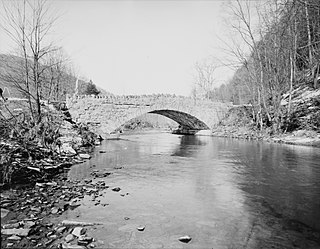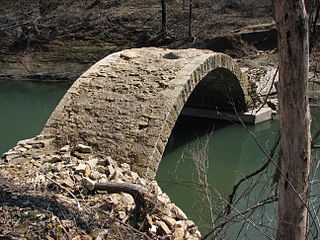
Dakota County is the third-most populous county in the U.S. state of Minnesota, located in the east central portion of the state. As of the 2020 census, the population was 439,882. The population of Dakota County was estimated to be 442,038 in 2021. The county seat is Hastings. Dakota County is named for the Dakota Sioux tribal bands who inhabited the area. The name is recorded as "Dahkotah" in the United States Census records until 1851. Dakota County is included in the Minneapolis–St. Paul–Bloomington, MN–WI Metropolitan Statistical Area, the sixteenth largest metropolitan area in the United States with about 3.64 million residents. The largest city in Dakota County is the city of Lakeville, the eleventh-largest city in Minnesota and sixth-largest Twin Cities suburb. The county is bordered by the Minnesota and Mississippi Rivers on the north, and the state of Wisconsin on the east.

Fort Snelling is a former military fortification and National Historic Landmark in the U.S. state of Minnesota on the bluffs overlooking the confluence of the Minnesota and Mississippi Rivers. The military site was initially named Fort Saint Anthony, but it was renamed Fort Snelling once its construction was completed in 1825.

The Stone Arch Bridge is a former railroad bridge crossing the Mississippi River at Saint Anthony Falls in downtown Minneapolis, Minnesota. It is the only arched bridge made of stone on the entire Mississippi River. It is the second oldest bridge on the river next to Eads Bridge. The bridge was built to connect the railway system to the new Union Depot, which at that time was planned to be built between Hennepin Avenue and Nicollet Avenue. The bridge was completed in 1883, costing $650,000 at the time. 117 Portland Avenue is the general address of the historic complex.

The Mendota Bridge, in the US state of Minnesota carries State Highway 55 (MN 55) and MN 62 over the Minnesota River between Fort Snelling and Mendota Heights. It is the final bridge over the Minnesota River before the Minnesota flows into the Mississippi River at the "Meeting of the waters" or "Mendota" in the Dakota language. Traffic on the north end of the bridge may turn onto the Fort Road Bridge (MN 5) to cross the Mississippi River into Saint Paul, Minnesota. The skylines of both Minneapolis and Saint Paul can be seen simultaneously from the bridge.

Minnesota State Highway 149 (MN 149) is a 9.924-mile-long (15.971 km) highway in Minnesota that runs from its intersection with State Highway 3 in Inver Grove Heights to its northern terminus at its intersection with State Highway 5 in Saint Paul.

The Seventh Street Improvement Arches are a double-arched masonry highway bridge that formerly spanned the St. Paul and Duluth Railroad tracks in Saint Paul, Minnesota, United States. The Seventh Street Improvement Arches are historically significant for its rarity and the technically demanding nature of its skewed, helicoidal spiral, stone-arch design. The bridge is one of the few of its type in the United States, and is the only known bridge of its type in Minnesota. It was built from 1883 to 1884 by Michael O'Brien and McArthur Brothers of Chicago and was designed by William A. Truesdell. The bridge was listed on the National Register of Historic Places in 1989 and on the American Society of Civil Engineers Historic Civil Engineering Landmarks in 2000.

The Intercity Bridge, more commonly known as the Ford Parkway Bridge, is a reinforced concrete arch bridge that spans the Mississippi River between Minneapolis, Minnesota and St. Paul, Minnesota, United States. It connects 46th Street in Minneapolis with Ford Parkway in Saint Paul. The bridge is historically significant as one of the largest reinforced concrete bridges ever built in Minnesota. It was built in 1925-1927 by James O. Heyworth, Inc. and was designed by Martin Sigvart Grytbak. The Intercity Bridge was listed on the National Register of Historic Places in 1989. It is notable as one of the monumental concrete rib-arch bridges spanning the high river bluffs along the Mississippi River, along with the Franklin Avenue Bridge, the Third Avenue Bridge, the 10th Avenue Bridge, and the Robert Street Bridge.

The Anoka–Champlin Mississippi River Bridge, also known as the Ferry Street Bridge, is a 10-span open spandrel concrete deck arch bridge that spans the Mississippi River between Anoka and Champlin, Minnesota, United States. It was built in 1929 by the Minneapolis Bridge Company, replacing an 1884 bridge at the same site.

The Chicago, Milwaukee, St. Paul and Pacific Depot Freight House and Train Shed, now officially named The Depot, is a historic railroad depot in downtown Minneapolis, Minnesota, United States. At its peak, the station served 29 trains per day. Following decline, the station was closed and eventually adapted into various other uses.

Summit Avenue is a street in St. Paul, Minnesota, United States, known for being the longest avenue of Victorian homes in the country, having a number of historic houses, churches, synagogues, and schools. The street starts just west of downtown St. Paul and continues four and a half miles west to the Mississippi River where Saint Paul meets Minneapolis. Other cities have similar streets, such as Prairie Avenue in Chicago, Euclid Avenue in Cleveland, and Fifth Avenue in New York City. Summit Avenue is notable for having preserved its historic character and mix of buildings, as compared to these other examples. Historian Ernest R. Sandeen described Summit Avenue as "the best preserved example of the Victorian monumental residential boulevard."

The Burbank–Livingston–Griggs House is the second-oldest house on Summit Avenue in Saint Paul, Minnesota, United States. It was designed in Italianate style by architect Otis L. Wheelock of Chicago and built from 1862 to 1863. The work was commissioned by James C. Burbank, a wealthy owner of the Minnesota Stage Company. Later, four significant local architects left their mark on the landmark structure.

This is a list of the National Register of Historic Places listings in Dakota County, Minnesota. It is intended to be a complete list of the properties and districts on the National Register of Historic Places in Dakota County, Minnesota, United States. Dakota County is located in the southeastern part of the U.S. state of Minnesota, bounded on the northeast side by the Upper Mississippi River and on the northwest by the Minnesota River. The locations of National Register properties and districts for which the latitude and longitude coordinates are included below, may be seen in an online map.

The Stewart Creek Bridge or Bridge L6007 is a stone arch bridge in the Smithville neighborhood of Duluth, Minnesota, United States. It was built around 1925 as part of the scenic Skyline Parkway overlooking the city. The Stewart Creek Bridge was listed on the National Register of Historic Places in 1989 under the name Bridge No. L-6007 for its state-level significance in the theme of engineering. It was nominated for being the most picturesque stone arch road bridge in design and setting in Minnesota.

Plunketts Creek Bridge No. 3 was a rubble masonry stone arch bridge over Plunketts Creek in Plunketts Creek Township, Lycoming County in the U.S. state of Pennsylvania. It was built between 1840 and 1875, probably closer to 1840, when the road along the creek between the unincorporated villages of Barbours and Proctor was constructed. Going upstream from the mouth, the bridge was the third to cross the creek, hence its name.
Reinforced-Concrete Highway Bridges in Minnesota MPS is a Multiple Property Submission of bridges listed on the National Register of Historic Places in Minnesota. The submission includes 20 individual bridges. It also includes the Chicago, Milwaukee and St. Paul Railroad Grade Separation, which comprises 30 bridges built over the Milwaukee Road tracks one block north of Lake Street in Minneapolis. The submission traces the historical context of reinforced concrete bridge building in Minnesota and cites examples of early and historic bridges.

The Point Douglas–St. Louis River Road Bridge, built in 1865, is the second oldest known stone arch bridge in the state of Minnesota after Sibley's Ferry Bridge in Mendota, which was built in 1864. It was constructed in Stillwater Township to carry the Point Douglas to Superior Military Road over Brown's Creek. The bridge was listed on the National Register of Historic Places in 1975 for having local significance in the themes of engineering and transportation. It was nominated as an example of stone engineering and as a remnant of Minnesota's early government roads.

The East Putney Brook Stone Arch Bridge is a historic stone arch bridge in eastern Putney, Vermont. Built in 1902, it is a rare statewide example of a 20th-century stone bridge, and one of a number of such area bridges built by Townshend farmer and mason James Otis Follett. It was listed on the U.S. National Register of Historic Places in 1976. The bridge is located just west (upstream) of the present alignment of River Road, which it formerly carried.

Bridge No. L1409, also known as the Garvin Brook Bridge, was a historic stone arch bridge in Hillsdale Township, Minnesota, United States, built in 1895. However it was largely destroyed during the 2007 Midwest flooding, when runoff carried away everything except the arch substructure. It had been listed on the National Register of Historic Places in 1990 for having state-level significance in the theme of engineering. It was nominated for being Minnesota's "most impressive" rural stone arch bridge, owing to its fine ashlar masonry and sizeable 45-foot (14 m) span. The bridge has been replaced by a modern structure. It was officially delisted from the National Register in 2016.

The Faribault Viaduct is a reinforced concrete highway bridge which carries Minnesota State Highway 60 over the Straight River in Faribault, Minnesota, United States.

Oheyawahi-Pilot Knob is a scenic overlook, and a Native American gathering place and burial ground in Mendota Heights, Minnesota, United States. The overlook provides views of the confluence of the Minnesota and Mississippi Rivers, Fort Snelling, and the Minneapolis and St. Paul skylines. It was the site of the 1851 Treaty of Mendota between the United States federal government and the Dakota people of Minnesota, who consider the site sacred. In 2017, Oheyawahi-Pilot Knob was listed on the National Register of Historic Places.





















